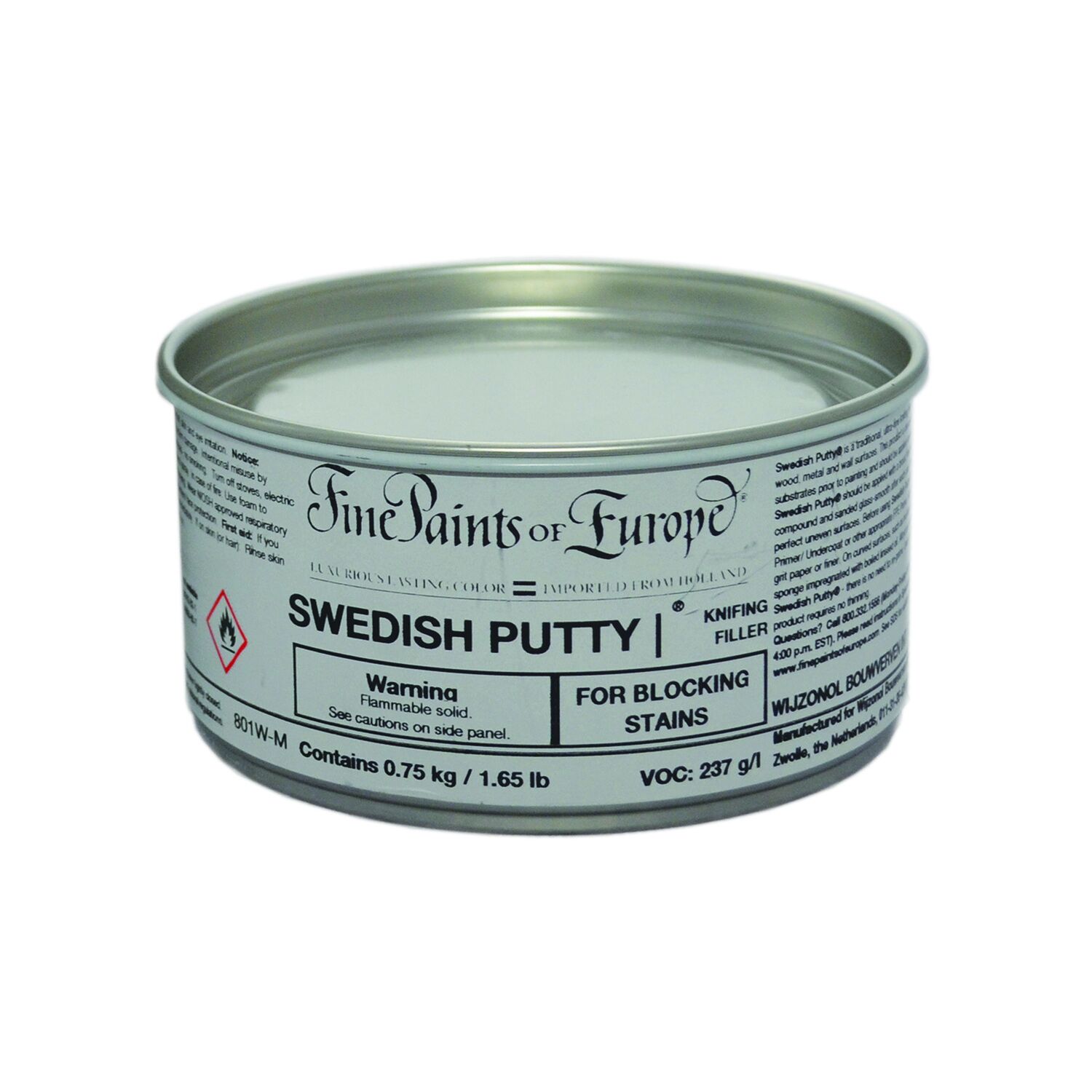Description
DESCRIPTION
In Northern Europe, this product is referred to as Swedish Putty; in France it is more commonly known as Enduit (on-dwee). It is a most unusual filling compound which has been used by European craftsmen since the eighteenth-century to produce spectacular results. With this material and a bit of patience, it is possible to obtain glass-like surfaces by applying very thin coats which are subsequently sanded with a fine grit paper (wet or dry). When sanding swedish putty dry, a mask is recommended.
The basic ingredients have always been finely ground titanium dioxide and silicates, combined with linseed oil and varnishes. Until recently, this material was mixed at the jobsite according to jealously guarded secret family formulas. Today, it is available from the factory for both interior and exterior use.
Swedish Putty should be applied in multiple thin, even coats in order to produce a substrate free of imperfections. Swedish Putty may be applied on non-flat surfaces such as moldings and trim with a sponge impregnated with linseed oil. This material is frequently used by decorative painters to prepare walls and surfaces for glazing, tromp l’oeil and lacquer like monochromatic finishes. (NOTE: It is much more durable then Gesso.) Swedish Putty is especially useful in transforming old kitchen cabinets into new ones when coated with Hollandlac Brilliant Gloss or Satin Enamel.
Swedish Putty may be used to perfect walls and ceilings or smaller “high focus” projects such as a front door. It is a material which can yield spectacular results even for first time users.
Swedish Putty is available in two colors: natural off-white and khaki. Most professionals prefer to work with off-white on woodwork and khaki on walls and ceilings.
WHEN USED TO PERFECT A SUBSTRATE PRIOR TO THE USE OF HIGH GLOSS FINISHES, SWEDISH PUTTY SHOULD NOT BE RE-PRIMED AS DOING SO WILL REINTRODUCE TEXTURE TO THE SUBSTRATE AND RESULT IN A LESS “MIRROR LIKE” FINISH.
SURFACE PREPARATION
Surfaces to be treated should be dry and free of dust, chalk, grease and foreign material which would affect adhesion or primer-coating.
Dust and chalk must be removed by use of a tack cloth. Grease and wax should be removed with an appropriate stripper or with a solvent based cleaning solution.
The “working time” of this product may be extended by thinning with boiled linseed oil.
APPLICATION
Tools: Use a broad, stainless steel spackle knife and plasterer’s “hawk” on a flat surfaces.
Use a sponge dipped in linseed oil on moldings and curved surfaces (apply like a heavy coat of polish).
New unpainted surfaces or previously painted surfaces: After surface preparation (sanding, etc.) and cleaning, apply one coat of FPE Oil or ECO primer and allow to dry overnight. Do not sand this primer prior to the application of Swedish Putty. DO NOT RE-PRIME. Apply a thin coat of Swedish Putty utilizing a clean, flexible “knife”. Use hand in rubber glove or sponge to apply this material to curved surfaces. Swedish Putty should be allowed to dry thoroughly (12-24 hours) before sanding to a glass-smooth finish.
Repeat process with one or more coats depending upon condition of surface and degree of perfection desired. Sand wet or dry with 220 or finer paper. After using Swedish Putty, the surface is prepared for final painting. Do not re-prime. Apply paint in thin coats as substrate is now less absorbent.
STORAGE
Keep can tightly sealed; cover unused portion with linseed oil.
TECHNICAL SPECIFICATIONS
- Resin binder: Linseed oil and alkyd resins
- Clean up: FPE Mineral Spirits
- Pigments: Silicates and titanium dioxide
MATERIAL SAFETY DATA SHEET
Swedish Putty





